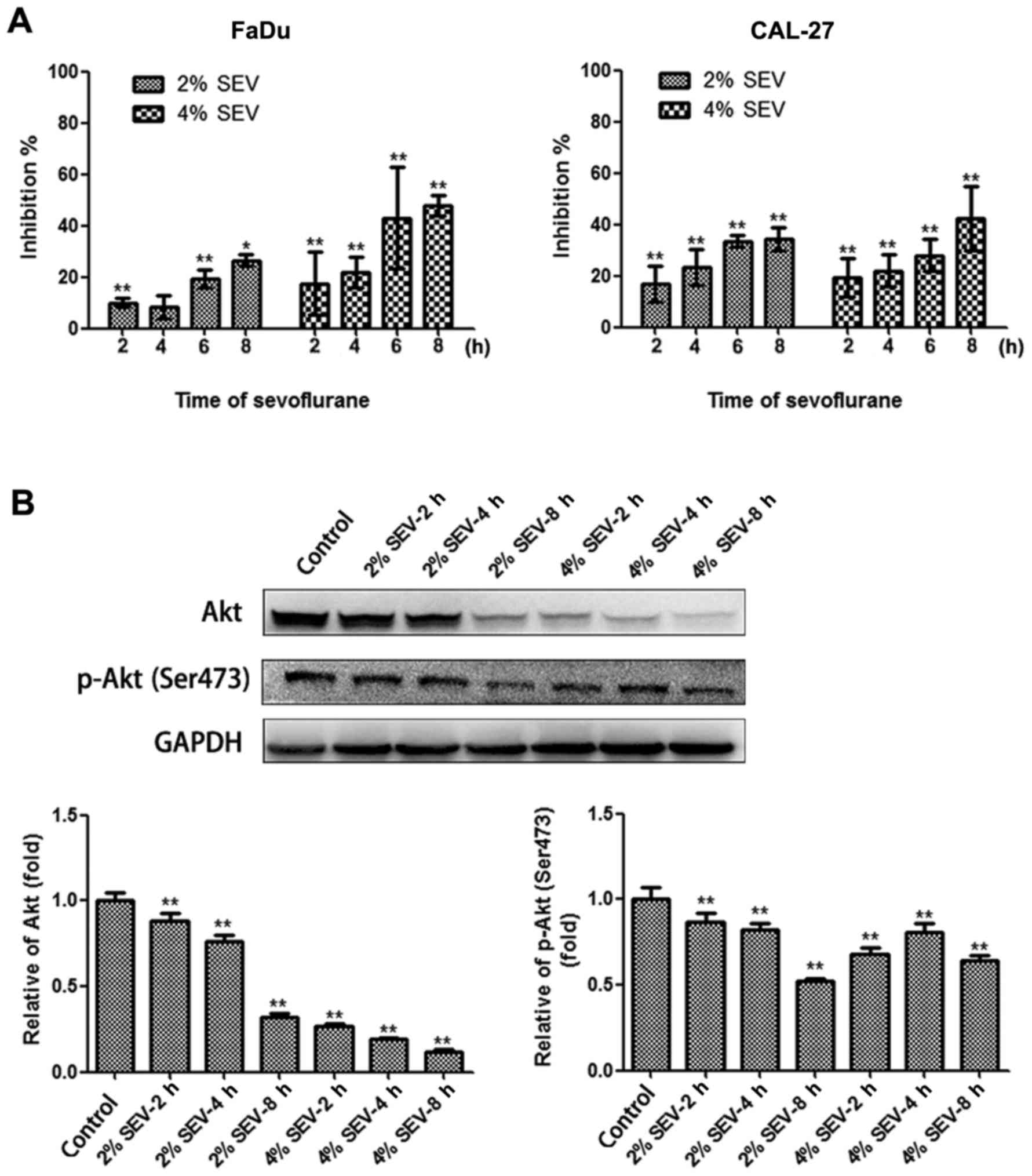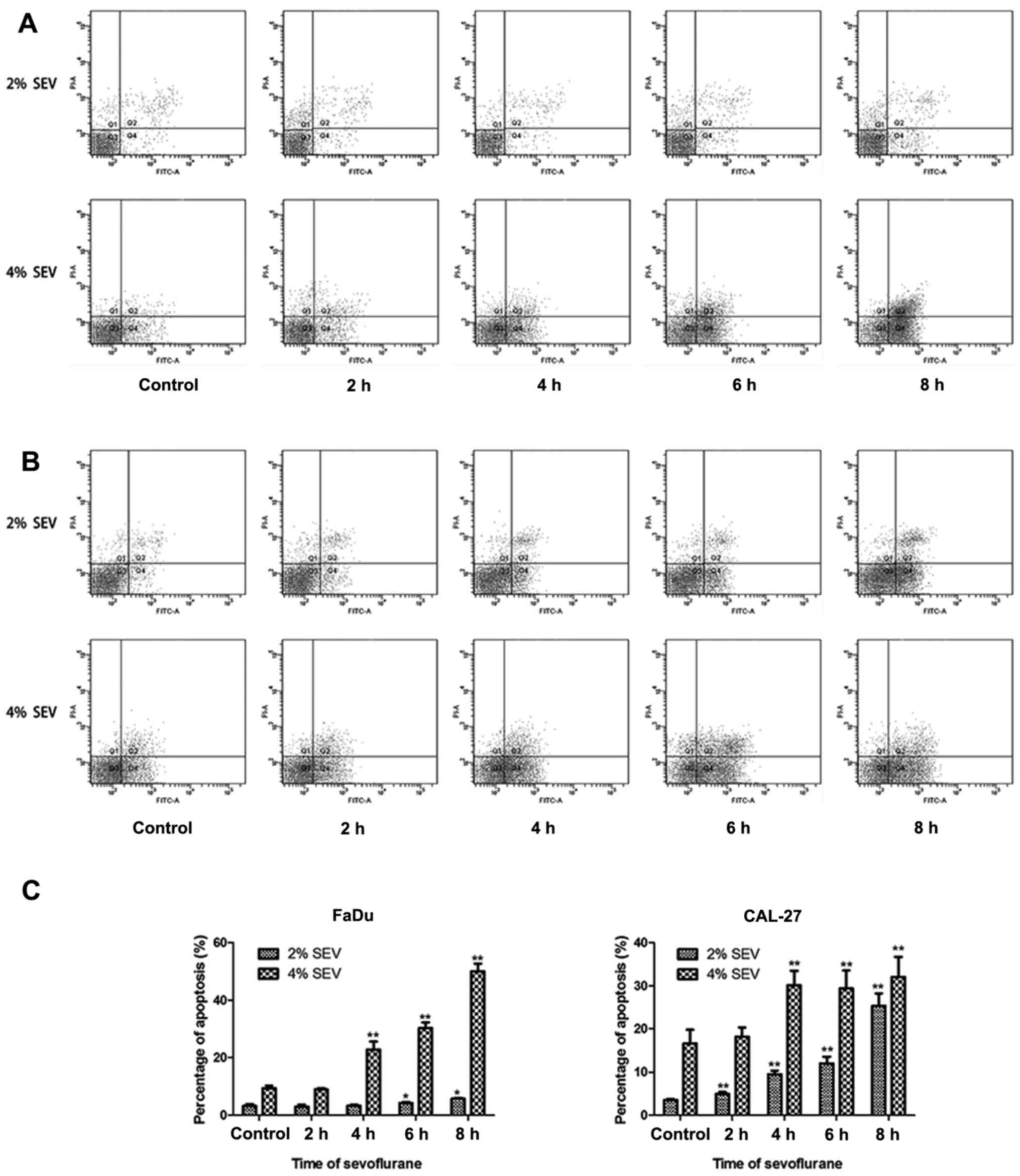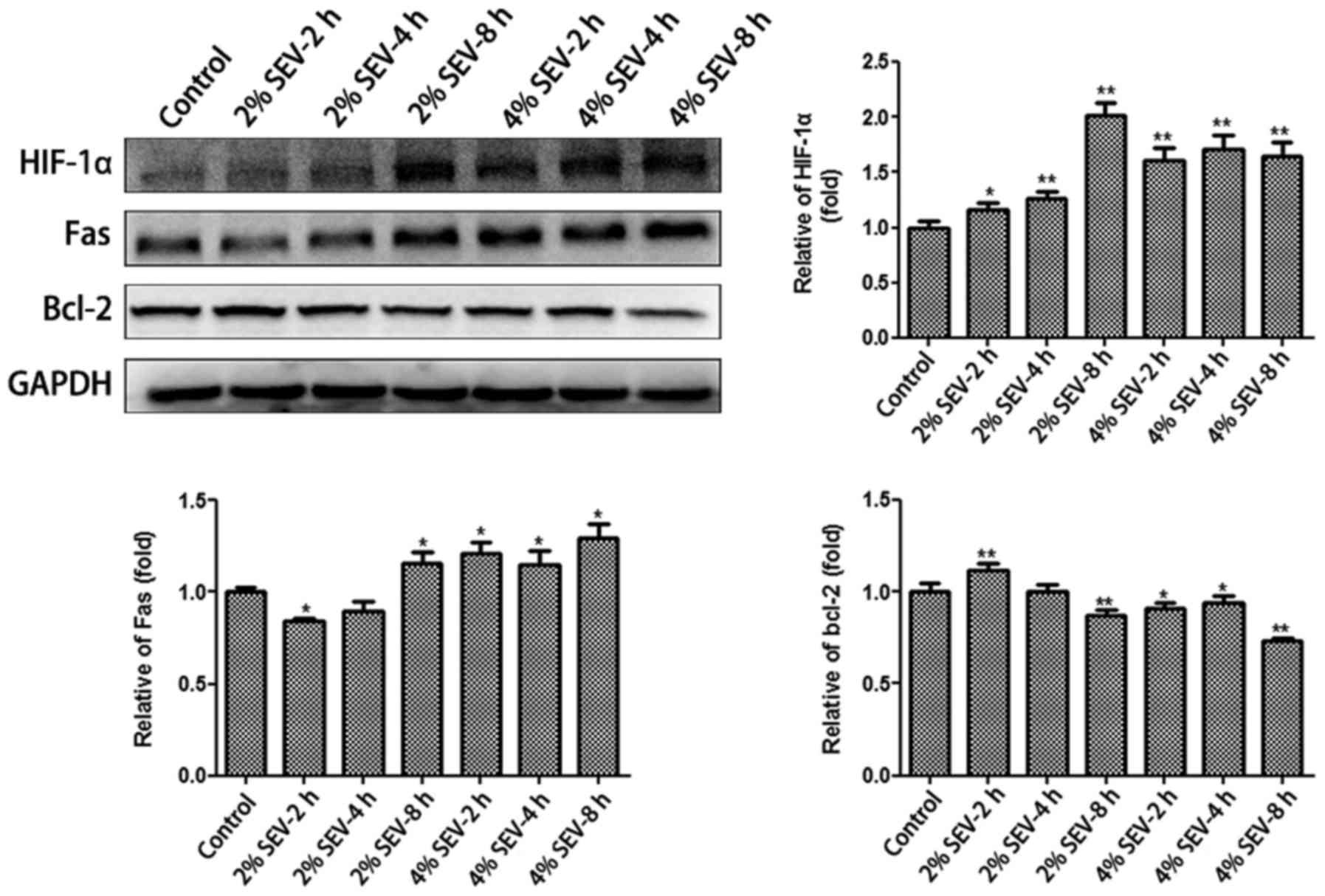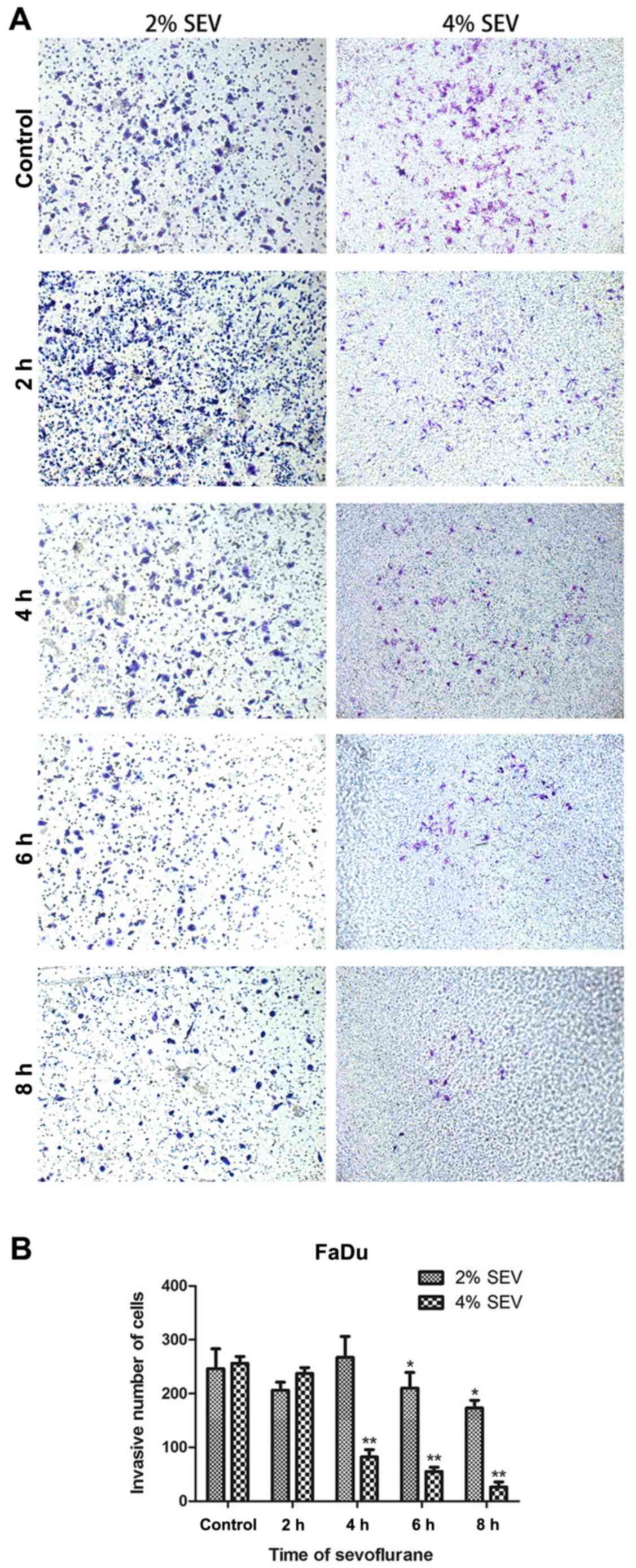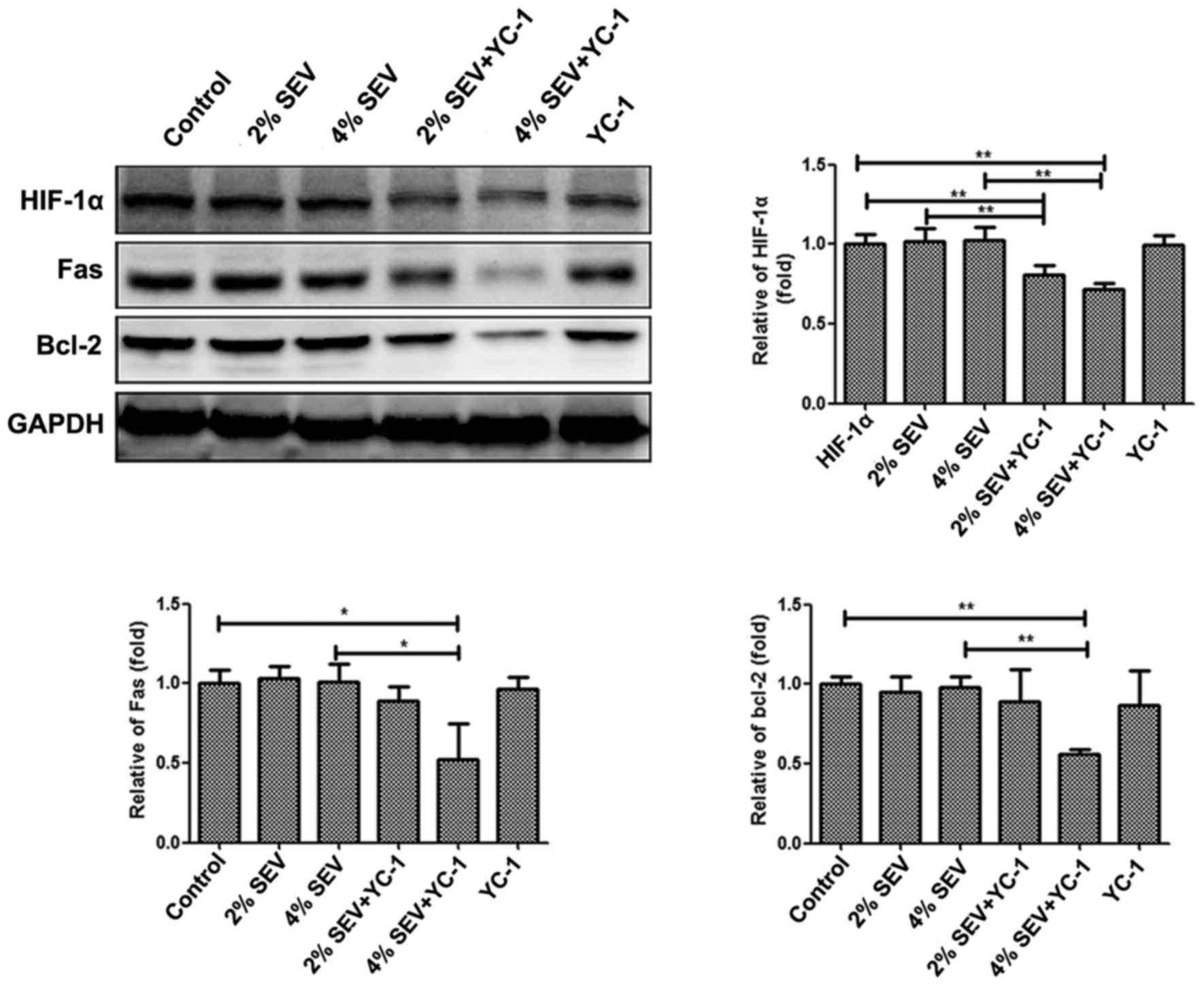|
1
|
Siegel R, Naishadham D and Jemal A: Cancer
statistics, 2013. CA Cancer J Clin. 63:11–30. 2013. View Article : Google Scholar : PubMed/NCBI
|
|
2
|
Fuller CD, Wang SJ, Thomas CR Jr, Hoffman
HT, Weber RS and Rosenthal DI: Conditional survival in head and
neck squamous cell carcinoma: results from the SEER dataset
1973-1998. Cancer. 109:1331–1343. 2007. View Article : Google Scholar : PubMed/NCBI
|
|
3
|
Kalavrezos N and Bhandari R: Current
trends and future perspectives in the surgical management of oral
cancer. Oral oncol. 46:429–432. 2010. View Article : Google Scholar : PubMed/NCBI
|
|
4
|
Niwa H, Rowbotham DJ, Lambert DG and Buggy
DJ: Can anesthetic techniques or drugs affect cancer recurrence in
patients undergoing cancer surgery? J Anesth. 27:731–741. 2013.
View Article : Google Scholar : PubMed/NCBI
|
|
5
|
Snyder GL and Greenberg S: Effect of
anaesthetic technique and other perioperative factors on cancer
recurrence. Br J Anaesth. 105:106–115. 2010. View Article : Google Scholar : PubMed/NCBI
|
|
6
|
López Correa T, Sánchez Hernández MV, Briz
Sánchez E and Estévez Amores FI: Anesthesia in head and neck
paragangliomas. Acta Otorrinolaringol Esp. 60(Suppl 1): 76–79.
2009.In Spanish.
|
|
7
|
Juckenhöfel S, Feisel C, Schmitt HJ and
Biedler A: TIVA with propofol-remifentanil or balanced anesthesia
with sevoflurane-fentanyl in laparoscopic operations. Hemodynamics,
awakening and adverse effects. Anaesthesist. 48:807–812. 1999.In
German. View Article : Google Scholar
|
|
8
|
Jun R, Gui-he Z, Xing-xing S, Hui Z and
Li-xian X: Isoflurane enhances malignancy of head and neck squamous
cell carcinoma cell lines: a preliminary study in vitro. Oral
Oncol. 47:329–333. 2011. View Article : Google Scholar : PubMed/NCBI
|
|
9
|
Saunders MI and Rojas AM: Management of
cancer of the head and neck - a cocktail with your PORT? N Engl J
Med. 350:1997–1999. 2004. View Article : Google Scholar : PubMed/NCBI
|
|
10
|
Vartanian JG, Carvalho AL, Carvalho SM,
Mizobe L, Magrin J and Kowalski LP: Pectoralis major and other
myofascial/myocutaneous flaps in head and neck cancer
reconstruction: experience with 437 cases at a single institution.
Head Neck. 26:1018–1023. 2004. View Article : Google Scholar : PubMed/NCBI
|
|
11
|
Spriano G, Pellini R and Roselli R:
Pectoralis major myocutaneous flap for hypopharyngeal
reconstruction. Plast Reconstr Surg. 110:1408–1413. 2002.
View Article : Google Scholar : PubMed/NCBI
|
|
12
|
Engroff SL: Fibula flap reconstruction of
the condyle in disarticulation resections of the mandible: a case
report and review of the technique. Oral Surg oral Med Oral Pathol
Oral Radiol Endod. 100:661–665. 2005. View Article : Google Scholar : PubMed/NCBI
|
|
13
|
Zhang L, Zhang J, Yang L, Dong Y, Zhang Y
and Xie Z: Isoflurane and sevoflurane increase interleukin-6 levels
through the nuclear factor-kappa B pathway in neuroglioma cells. Br
J Anaesth. 110(Suppl 1): i82–i91. 2013. View Article : Google Scholar : PubMed/NCBI
|
|
14
|
Sun Y, Li QF, Zhang Y, Hu R and Jiang H:
Isoflurane preconditioning increases survival of rat skin
random-pattern flaps by induction of HIF-1α expression. Cell
Physiol Biochem. 31:579–591. 2013. View Article : Google Scholar
|
|
15
|
Benzonana LL, Perry NJ, Watts HR, Yang B,
Perry IA, Coombes C, Takata M and Ma D: Isoflurane, a commonly used
volatile anesthetic, enhances renal cancer growth and malignant
potential via the hypoxia-inducible factor cellular signaling
pathway in vitro. Anesthesiology. 119:593–605. 2013. View Article : Google Scholar : PubMed/NCBI
|
|
16
|
Heaney A and Buggy DJ: Can anaesthetic and
analgesic techniques affect cancer recurrence or metastasis? Br J
Anaesth. 109(Suppl 1): i17–i28. 2012. View Article : Google Scholar
|
|
17
|
Exadaktylos AK, Buggy DJ, Moriarty DC,
Mascha E and Sessler DI: Can anesthetic technique for primary
breast cancer surgery affect recurrence or metastasis?
Anesthesiology. 105:660–664. 2006. View Article : Google Scholar : PubMed/NCBI
|
|
18
|
Biki B, Mascha E, Moriarty DC, Fitzpatrick
JM, Sessler DI and Buggy DJ: Anesthetic technique for radical
prostatectomy surgery affects cancer recurrence: a retrospective
analysis. Anesthesiology. 109:180–187. 2008. View Article : Google Scholar : PubMed/NCBI
|
|
19
|
Loop T, Scheiermann P, Doviakue D,
Musshoff F, Humar M, Roesslein M, Hoetzel A, Schmidt R, Madea B,
Geiger KK, et al: Sevoflurane inhibits
phorbol-myristate-acetate-induced activator protein-1 activation in
human T lymphocytes in vitro: potential role of the p38-stress
kinase pathway. Anesthesiology. 101:710–721. 2004. View Article : Google Scholar : PubMed/NCBI
|
|
20
|
Dong Y, Zhang G, Zhang B, Moir RD, Xia W,
Marcantonio ER, Culley DJ, Crosby G, Tanzi RE and Xie Z: The common
inhalational anesthetic sevoflurane induces apoptosis and increases
beta-amyloid protein levels. Arch Neurol. 66:620–631. 2009.
View Article : Google Scholar : PubMed/NCBI
|
|
21
|
Roesslein M, Frick M, Auwaerter V, Humar
M, Goebel U, Schwer C, Geiger KK, Pahl HL, Pannen BH and Loop T:
Sevoflurane-mediated activation of p38-mitogen-activated stress
kinase is independent of apoptosis in Jurkat T-cells. Anesth Analg.
106:1150–1160. 2008. View Article : Google Scholar
|
|
22
|
Kvolik S, Glavas-Obrovac L, Bares V and
Karner I: Effects of inhalation anesthetics halothane, sevoflurane,
and isoflurane on human cell lines. Life Sci. 77:2369–2383. 2005.
View Article : Google Scholar : PubMed/NCBI
|
|
23
|
Kvolik S, Dobrosevic B, Marczi S, Prlic L
and Glavas-Obrovac L: Different apoptosis ratios and gene
expressions in two human cell lines after sevoflurane anaesthesia.
Acta Anaesthesiol Scand. 53:1192–1199. 2009. View Article : Google Scholar : PubMed/NCBI
|
|
24
|
Liang H, Gu MN, Yang CX, Wang HB, Wen XJ
and Zhou QL: Sevoflurane inhibits proliferation, induces apoptosis,
and blocks cell cycle progression of lung carcinoma cells. Asian
Pac J Cancer Prev. 12:3415–3420. 2011.PubMed/NCBI
|
|
25
|
Owen-Schaub L, Chan H, Cusack JC, Roth J
and Hill LL: Fas and Fas ligand interactions in malignant disease.
Int J oncol. 17:5–12. 2000.PubMed/NCBI
|
|
26
|
Nagata S: Apoptosis by death factor. Cell.
88:355–365. 1997. View Article : Google Scholar : PubMed/NCBI
|
|
27
|
Owen-Schaub LB, van Golen KL, Hill LL and
Price JE: Fas and Fas ligand interactions suppress melanoma lung
metastasis. J Exp Med. 188:1717–1723. 1998. View Article : Google Scholar : PubMed/NCBI
|
|
28
|
Algeciras-Schimnich A, Shen L, Barnhart
BC, Murmann AE, Burkhardt JK and Peter ME: Molecular ordering of
the initial signaling events of CD95. Mol Cell Biol. 22:207–220.
2002. View Article : Google Scholar
|
|
29
|
Möller P, Koretz K, Leithäuser F,
Brüderlein S, Henne C, Quentmeier A and Krammer PH: Expression of
APo-1 (CD95), a member of the NGF/TNF receptor superfamily, in
normal and neoplastic colon epithelium. Int J Cancer. 57:371–377.
1994. View Article : Google Scholar : PubMed/NCBI
|
|
30
|
Hill LL, Ouhtit A, Loughlin SM, Kripke ML,
Ananthaswamy HN and Owen-Schaub LB: Fas ligand: a sensor for DNA
damage critical in skin cancer etiology. Science. 285:898–900.
1999. View Article : Google Scholar : PubMed/NCBI
|
|
31
|
Zörnig M, Grzeschiczek A, Kowalski MB,
Hartmann KU and Möröy T: Loss of Fas/Apo-1 receptor accelerates
lymphomagenesis in E mu L-MYC transgenic mice but not in animals
infected with MoMuLV. Oncogene. 10:2397–2401. 1995.PubMed/NCBI
|
|
32
|
Gordon N and Kleinerman ES: The role of
Fas/FasL in the metastatic potential of osteosarcoma and targeting
this pathway for the treatment of osteosarcoma lung metastases.
Cancer Treat Res. 152:497–508. 2009. View Article : Google Scholar
|
|
33
|
Leber B, Geng F, Kale J and Andrews DW:
Drugs targeting Bcl-2 family members as an emerging strategy in
cancer. Expert Rev Mol Med. 12:e282010. View Article : Google Scholar : PubMed/NCBI
|
|
34
|
Gong JS, Yao YT, Fang NX and Li LH:
Sevoflurane postconditioning attenuates reperfusion-induced
ventricular arrhythmias in isolated rat hearts exposed to
ischemia/reperfusion injury. Mol Biol Rep. 39:6417–6425. 2012.
View Article : Google Scholar : PubMed/NCBI
|
|
35
|
Wang JK, Yu LN, Zhang FJ, Yang MJ, Yu J,
Yan M and Chen G: Postconditioning with sevoflurane protects
against focal cerebral ischemia and reperfusion injury via PI3K/Akt
pathway. Brain Res. 1357:142–151. 2010. View Article : Google Scholar : PubMed/NCBI
|
|
36
|
Li QF, Zhu YS and Jiang H: Isoflurane
preconditioning activates HIF-1alpha, iNOS and Erk1/2 and protects
against oxygen-glucose deprivation neuronal injury. Brain Res.
1245:26–35. 2008. View Article : Google Scholar : PubMed/NCBI
|
|
37
|
Li QF, Wang XR, Yang YW and Su DS:
Up-regulation of hypoxia inducible factor 1alpha by isoflurane in
Hep3B cells. Anesthesiology. 105:1211–1219. 2006. View Article : Google Scholar : PubMed/NCBI
|
|
38
|
McCawley LJ and Matrisian LM: Matrix
metalloproteinases: multifunctional contributors to tumor
progression. Mol Med Today. 6:149–156. 2000. View Article : Google Scholar : PubMed/NCBI
|
|
39
|
Sternlicht MD and Werb Z: How matrix
metalloproteinases regulate cell behavior. Annu Rev Cell Dev Biol.
17:463–516. 2001. View Article : Google Scholar : PubMed/NCBI
|
|
40
|
Hurmath FK, Mittal M, Ramaswamy P,
Umamaheswara Rao QS and Dalavaikodihalli Nanjaiah N: Sevoflurane
and thiopental preconditioning attenuates the migration and
activity of MMP-2 in U87MG glioma cells. Neurochem Int. 94:32–38.
2016. View Article : Google Scholar : PubMed/NCBI
|
|
41
|
Xu YJ, Li SY, Cheng Q, Chen WK, Wang SL,
Ren Y and Miao CH: Effects of anaesthesia on proliferation,
invasion and apoptosis of Lovo colon cancer cells in vitro.
Anaesthesia. 71:147–154. 2016. View Article : Google Scholar
|
|
42
|
Gottschalk A, Sharma S, Ford J, Durieux ME
and Tiouririne M: The role of the perioperative period in
recurrence after cancer surgery (Review). Anesth Analg.
110:1636–1643. 2010. View Article : Google Scholar : PubMed/NCBI
|















